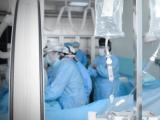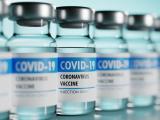Reports released this week offer more details on the changing pattern of Middle East respiratory syndrome coronavirus (MERS-CoV) cases in recent months, including steep declines in the proportion of severe and fatal cases.
For example, the case-fatality rate (CFR) for the period of March through May was 58%, but for June through Sep 25 it dropped to 27%, according to a Eurosurveillance report by European and Saudi Arabian researchers.
That report and one from the European Centre for Disease Prevention and Control (ECDC) said about a quarter of all MERS-CoV infections have been healthcare-associated. Meanwhile, the US Centers for Disease Control and Prevention (CDC) reported that 21% of cases have been mild or asymptomatic.
The latest findings fit with previous reports pointing to a decline in the percentage of severe cases, a drop in patients' average age, and a growing share of patients who are women. The changes have been attributed to increased testing of patients' contacts, leading to the identification of more mild and healthcare-linked cases.
The World Health Organization's (WHO) current MERS-CoV count is 130 cases with 58 deaths. Saudi Arabia has had 110 cases with 49 deaths, according to the Saudi Ministry of Health.
Time periods compared
For yesterday's Eurosruveillance report, the authors compared MERS-CoV case patterns for the two time periods (March through May and June to Sep 25).
They found an overall CFR of 45% (based on 133 total cases). For the earlier period, 23 of 40 (58%) symptomatic cases were fatal, but for the later interval only 21 of 77 cases (27%) were fatal.
The share of cases requiring intensive care unit (ICU) confinement also dropped sharply. The overall rate for the 133 cases was 45%. For the March-May period, 63% of patients were admitted to ICUs; this dropped to 33% for June to September.
The researchers identified 14 case clusters, ranging from 2 to 34 cases, with known or suspected primary cases, though the quality of data was termed "weak." All the primary case-patients were men (age range, 24 to 83 years) who were probably exposed on the Arabian Peninsula. Thirteen of the 14 primary patients died.
For 129 cases with available information on transmission, 33 (26%) involved possible nosocomial transmission, the authors report. Fifteen of the 33 case-patients were healthcare workers. Also, of 23 healthcare workers infected overall, 17 were women.
The female-to-male ratio for all cases is 0.67, but it increased from 0.33 in the earlier period to 1.08 in the more recent period, the researchers found.
In other findings, 18 asymptomatic or mild cases have been reported, including 16 in Saudi Arabia and 2 in the United Arab Emirates, the report says.
The preponderance of men as primary case-patients in clusters suggests that behavioral risk factors "may play a role [in] exposing them directly or indirectly to the reservoir of MERS-CoV," the researchers write.
In an apparent response to critics' concerns about a lack of case-control studies to identify exposure factors in Saudi Arabia, the authors add, "The severity of the diseases and fatal outcomes of the majority of the primary cases hinders effective exploration to identify risk factors."
They conclude that the findings show a changing pattern of cases compared with previous reports: "More women and cases without comorbidities are being reported. The increased proportion of asymptomatic cases and the decreased CFR may reflect enhanced surveillance catching cases having remained unnoticed at the early stages of the epidemic."
ECDC and CDC updates
The ECDC released an updated MERS-CoV risk assessment yesterday, citing a total of 133 cases and 60 deaths as of Sep 24. Among other things, it says that the monthly number of new cases in Saudi Arabia has increased tenfold since April.
By the ECDC's reckoning, nosocomial transmission accounts for 24% of cases. The agency says that with no evidence of a change in the infectiousness of MERS-CoV, its pandemic potential remains low.
The CDC offered a brief epidemiologic summary and some updated guidance in today's issue of Morbidity and Mortality Weekly Report (MMWR).
It says that 27 of 130 cases (21%) have involved mild or no symptoms. No cases have yet been identified in the United States, although 82 people from 29 states have been tested for the virus.
The CDC article includes guidance on evaluating patients, case definitions, travel, infection control, and care of patients at home, along with advice for close contacts of patients.
Among other things, the agency now says patients can be tested for MERS-CoV and other respiratory pathogens at the same time and that a positive test for another pathogen should not necessarily preclude testing for MERS-CoV.
The agency advises that confirmed case-patients and those being evaluated for MERS-CoV should be isolated at home, provided the home is suitable and the patient doesn't need hospitalization for medical reasons. For confirmed patients, isolation should continue until public health authorities or healthcare providers determine that they are no longer infectious.
Those who might have been exposed to the virus should be monitored for 14 days after the latest exposure, but exposed people without symptoms need not limit their activities outside the home, the CDC says.
See also:
Sep 26 Eurosurveillance report
Sep 26 ECDC risk assessment
Sep 27 MMWR update on MERS-CoV
Separate CDC guidance document on home care




















